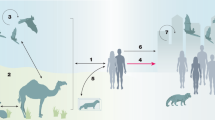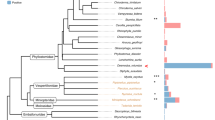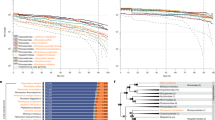Abstract
THE transmission of rabies by bats was first reported in 1921 (ref. 1). Vampire bats (Desmodus rotundus murinus) have been found to be an important carrier of sylvatic rabies in South America2, and they have been known to shed the virus in their saliva for long periods of time without apparent illness3. Since 1953, when the first rabies isolate from bats in the United States was made from a yellow bat (Dasypterus floridanus) in Florida, there have been more than five hundred isolates from bats in at least thirty-six States4. A survey of the literature has failed to reveal reports of rabies in bats in south-east Asia, and publications of the World Health Organization5,6 state that surveys of bat rabies in Asia have been consistently negative. The same statement about bat rabies in Europe, however, was refuted by Pitzschke7, who isolated rabies virus from a wide-winged bat (Epitescus serotinus) in Thuringia, Germany. The high prevalence of rabies in Thailand and the dense bat population prompted us to investigate the disease in bats in this area.
This is a preview of subscription content, access via your institution
Access options
Subscribe to this journal
Receive 51 print issues and online access
$199.00 per year
only $3.90 per issue
Buy this article
- Purchase on SpringerLink
- Instant access to full article PDF
Prices may be subject to local taxes which are calculated during checkout
Similar content being viewed by others
References
Haupt, H., and Rehaad, H. S., Infektions-Krankh. Parasit. Krankh. Hyg. Haustiere, 22, 104 (1921).
Malaga-Alba, A., Report, Pan American Sanitary Bureau (1958).
Lima, E. de. Q., Brazil-Med., 48, 38 (1931).
Tierkel, E. S., Diseases Transmitted from Animals to Man, fifth ed. (edit. by Hull, Thomas G.), 325 (Chas. C. Thomas, Springfield. Illinois. 1963).
WHO Tech. Rep. Ser. No. 321, 28 (WHO Expert Committee on Rabies, Geneva, 1966).
WHO Chronicle, 20, No. 4, 120 (April 1966).
Pitzschke, Horst, Hyg. Abt., 196 (4), 411 (1965).
Constantine, Denny G., Amer. J. Vet. Res., 27 (116), 16 (1966).
Allen, Raá, Sims, Ruth A., and Sulkin, S. Edward, Amer. J. Hyg., 80 (1), 11 (1964).
Author information
Authors and Affiliations
Rights and permissions
About this article
Cite this article
SMITH, P., LAWHASWASDI, K., VICK, W. et al. Isolation of Rabies Virus from Fruit Bats in Thailand. Nature 216, 384 (1967). https://doi.org/10.1038/216384a0
Received:
Published:
Issue date:
DOI: https://doi.org/10.1038/216384a0
This article is cited by
-
Ecology of rabies
Tropical Animal Health and Production (1969)
-
Enzootic Rabies in Rodents in Thailand
Nature (1968)



